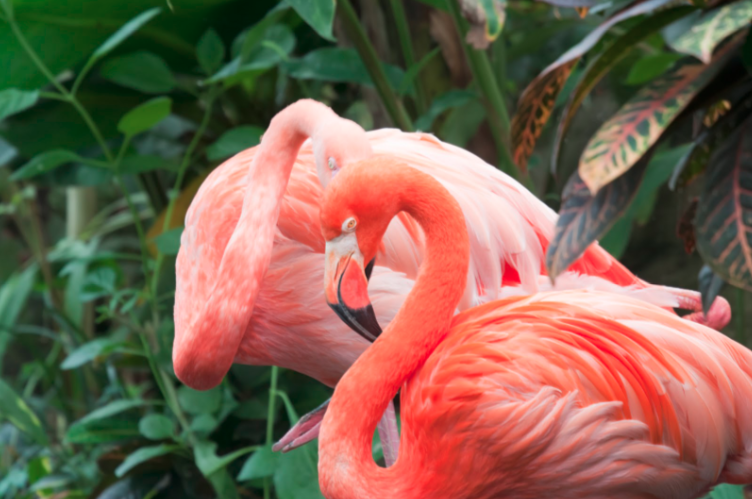South America is home to numerous fascinating bird species, from tiny hummingbirds to mighty condors. However, there are some species you might not expect. For instance, did you know that there is such a thing as Galapagos Islands flamingos? Situated off the coast of Ecuador, the Galapagos Islands are famously where Charles Darwin developed his theory of natural selection. He was largely inspired by the incredible endemic species – like the Galapagos Islands flamingos. Here, we run through some facts about this fascinating and fun bird species.
1. They’re brighter pink than African flamingos
Flamingos live in southern Europe, Africa, India, and small pockets of South America. All species of flamingo are pretty special – for example, the flamingo has the longest neck and legs compared to their body of any bird. On average, an adult flamingo’s neck is about 50 inches long. However, what makes Galapagos Islands flamingos so remarkable is their beautiful pink plumage. Far brighter than African flamingos, another name for the Galapagos flamingo is the rosy flamingo. Interestingly, their bright pink color is as a result of their diet of crustaceans.
2. They eat upside down
Galapagos Islands flamingos eat small shellfish and tiny water plants. Their unusual hooked beaks are bright pink with a black tip. Furthermore, their beaks are specially adapted to sift debris out of their food. When feeding, the flamingos turn their heads upside down to pass food over a thin membranes known as lamellae. This filters their food ensuring it’s free of silt and mud.
3. Males and females look the same

Male and female Galapagos Islands flamingos are exactly the same. Neither sex show any distinctive markings, size difference, or behavior. Although the female lays the egg, both sexes participate in nest building, egg incubation, and caring for their young. Fascinatingly, both male and female flamingos produce milk and nurse their chicks for two months after they hatch.
4. Galapagos Islands flamingos mate for life
Scientists believe that the Galapagos flamingo is monogamous. Usually, the flamingos won’t mate until they’re about six years old, which is quite late in the bird world. Flamingos undergo group mating rituals, where several flamingos parade their feathers to attract a mate. After a courtship period, the flamingos will stay together for a lifetime.
5. Standing on one leg conserves their energy (surprisingly!)

Flamingos are famous for standing on one leg. However, you may not know that they do this to save energy. This is surprising, as standing on one leg all day would be exhausting for humans! For flamingos, standing on one leg is a resting position that stores body heat and reduces cardiac exertion.
When’s the best time to spot Galapagos Islands flamingos?
Generally, flamingos live in the shallow waters around the Galapagos archipelago. The flamingos are found throughout the island chain, but larger colonies live on Isabela Island, Santa Cruz, Florena Island and Santiago Island. Flamingos can be observed all year round, but if you’re keen to see flamingo chicks, the best time of year to visit is between spring and summer.
No comments yet
There are no comments on this post yet.






Leave a comment